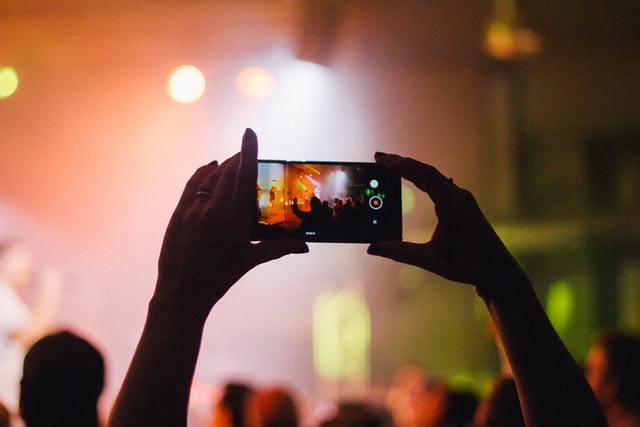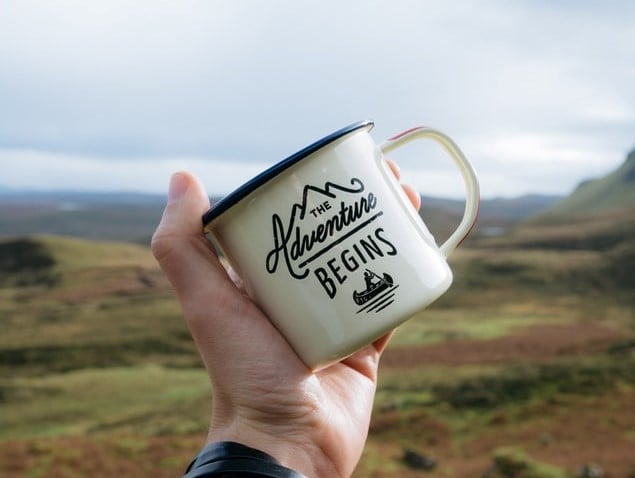It’s a strange time, and we are getting a lot of conflicting signals on the economy’s health. On the one hand, marketing budgets are thawing, some agencies are making a return (of sorts) to the office, and new business is underway. There are signs that we’re moving in the direction of normalcy.
On the other hand, though, we’re still in the thick of a pandemic. Broadly, based on many reports and economic indicators, one gets the sense that the other shoe could drop at any time, and what’s ahead on the path to recovery remains an open question. Immediate concerns for agencies, in particular, include a second round of layoffs that may be coming, and impending reviews for those who can’t demonstrate proof of performance in the second half of the year.
As always, adaptability is King for agencies. In this roller-coaster of a year, I can’t think of any agency categories that have seen more extreme change than experiential and OOH. What even is an experiential agency when there are no conferences to create and no in-person events to design?

After taking an estimated 70-85% revenue loss early in the pandemic (according to WARC and Nielsen, respectively), OOH agencies were left to do some serious soul-searching. We’ve seen some OOH and experiential agencies close their doors, while others have discovered new workarounds. Let’s explore what they’ve been doing to negotiate these abrupt changes.
Four examples of how experiential and OOH agencies have met challenges and what you can learn from them:
Challenge: Loss of traffic data undermines value.
When the pandemic caused changes in human traffic patterns around adspace (they abruptly dropped, then changed from week to week) it left agencies without predictable footfall to measure OOH effectiveness. So they turned to anonymized mobile data to gauge human movement. Incidentally, this is an improvement over older data that “wouldn’t have been accurate enough to know if somebody was in the vicinity of the panel,” says Clear Channel’s European chief executive, Justin Cochrane. According to Posterscope USA’s president, Christian Vollerslev, this data will “generate a quicker recovery for OOH in the US.”
Lesson: When you lose access to something that undermines your offering's value, find a replacement that's newer and better.
This can be true of key hire, an important data source, a piece of software, or any number of things. The important point is to quickly find something else that is not the same, but better. Nobody will care about footfall when there is more accurate and precise data available.
Challenge: Creating a compelling offering to offset a drop in demand.
With more people working from home and fewer people riding public transportation or driving into urban centers, brands paused their OOH investments. Agencies were forced to reimagine what OOH could offer. While digital out-of-home (DOOH) is not new, the pandemic increased its importance and made it an area of greater opportunity for OOH agencies.
DOOH screens, which have been rolled out over about a decade, can be dynamically customized based on real-time data triggers (such as weather, sports scores, social media, or current events). DOOH platforms can also be “melded” with programmatic buying, which “will be vital for the fast growth of the medium,” writes John McCarthy in The Drum. DOOH can also be synced with radio ads to provide an audio and visual experience in tandem, as the Digital Advertising Exchange does (The Drum). Additionally, DOOH facilitates “riskier” work by allowing ads to be altered or replaced “with the press of a button,” according to Clear Channel’s Cochrane.

Lesson: Take full advantage of your resources.
In this case, the fact that agencies weren't fully tapping into their DOOH assets until they were forced to ended up working in their favor. But, it could just as easily have been the case that the digital screens had become so outdated over ten years that they weren't compatible in a meaningful way with newer technologies. Why not create a team to brainstorm on new uses and applications of your current assets so that you can find your agency’s next great opportunity now?
Challenge: Making experiential happen in a post-COVID world.
Most Americans wouldn’t attend experiential events in the near future. Still, interestingly, YouGov found that “Even with the current restrictions in place, nearly a third (31%) of Americans have attended product demonstrations, one-in-five have attended pop-up shops, and 17% have gone to brand installations,” (in The Drum).
There are a few takeaways from this. One, where do opportunities exist for brands to take advantage of those consumers who would still like to attend experiential events? And how do agencies grow those numbers by developing new and safe experiences? Some are finding that opportunities exist in outdoor spaces and with smaller groups. Netflix’s newly announced “Stranger Things” drive-into experience is a perfect example of how experiential can adapt to the pandemic era.
Also, with most consumers unwilling to participate in-person, what aspects of in-person events can be re-created in the virtual space? Giveaways of food and drink are popular at in-person events, so can those be incorporated into a virtual event? Some agencies are working to create more immersive experiences by incorporating technologies like AR, VR, and smart devices.
Lesson: Where there’s a creative with will, there’s a way.
Creatives should never come up short when presented with a challenge, no matter how daunting. Nowhere is that better demonstrated than by experiential agencies in 2020. Despite overwhelming odds, experiential agencies have continued to search for opportunities and to reimagine the boundaries of what experiential looks like. While many agencies have leaned out of experiential services to focus on other service offerings this year, those who have continued to apply the creative thinking that the experiential space is known for will be the ones who shape the future of the medium. What could you accomplish for your agency by applying this level of creative thinking to your next challenge?

Challenge: Selling adspace in a crowded marketplace with a lot of waste.
OOH agency Posterscope is selling media differently through it’s Ecos Now platform. Instead of having advertisers buy adspace based on availability, they can buy based on specific conditions. For example, as Posterscope’s managing director Glen Wilson explains, if you want to cell cider and cider sales correlate with hot weather, then “you could only buy the medium in certain places when certain temperature triggers were set off.” But when those conditions are unmet, you don’t have to buy anything, which is “a much more efficient use of expenditure.”
Lesson: Apply established technology and new pricing models to create unique and compelling offerings that speak to marketers’ needs.
Adspace abounds, and OOH agencies haven't been in a position to offer adspace at full price lately, at least according to Quan’s CEO Brian Rappaport (in Digiday). At the same time, brands still want more for less (as usual) and don't want to pay for what they don’t need. Ecos Now’s premise is a perfect answer to those trends. In fact, the pricing model (paying only for what you need) is a core selling point of the platform. Could you sell any of your agency's services around updated pricing models (based not on low cost but high value)?
Ecos Now applies seemingly simple logic rules to media buying, so there are probably a few people wondering why they didn’t think of it first. They probably could have, and I’m guessing so could your team. Everyone has a “proprietary” system or software of some sort, and that in and of itself isn’t very meaningful. But if you create something that is genuinely different and useful, it can be used to entice future clients with. So, make time to brainstorm on how existing technology can be applied in new ways to create better solutions to benefit both your agency and its clients.
Parting thoughts
Agencies of all types can fuel their momentum by applying some of the strategies experiential and OOH agencies have had to lean on out of necessity.
The pandemic has forced both experiential and OOH agencies to build out their digital offerings. OOH agencies have learned to leverage technologies that were invested in over the previous decade and have rapidly accelerated their integration with other assets, creating new offerings that are greater than the sum of their parts.
OOH has also evolved to offer flexible options that can be updated in real-time, which makes it much more compelling for advertisers. As Alistair MacCallum of Kinetic Worldwide writes in Campaign, "[OOH] has been compelled to fast [forward] itself five years into the future, using the quiet period as a summer of innovation."
Likewise, experiential has been forced to push the boundaries of how brands can create memorable experiences in a virtual and limited environments.
What can you learn from a “survivor agency” that’s been forced to adapt—or even one that’s shut its doors? Lessons abound, it’s just a matter of finding time to process the information and put it into practice. If you’ve learned any useful lessons lately (hopefully not the hard way), please consider sharing them in the comments for the collective good.
Read more:
- How Do Agency Websites Reflect The New Realities Of 2020?
- What Will Your Agency Look Like On The Other Side Of This Crisis?
- Work From Home is the Future of Agencies
Image credits: Photo by Nathan Dumlao on Unsplash; Photo by Simon Migaj on Unsplash; Photo by John Mark Arnold on Unsplash



